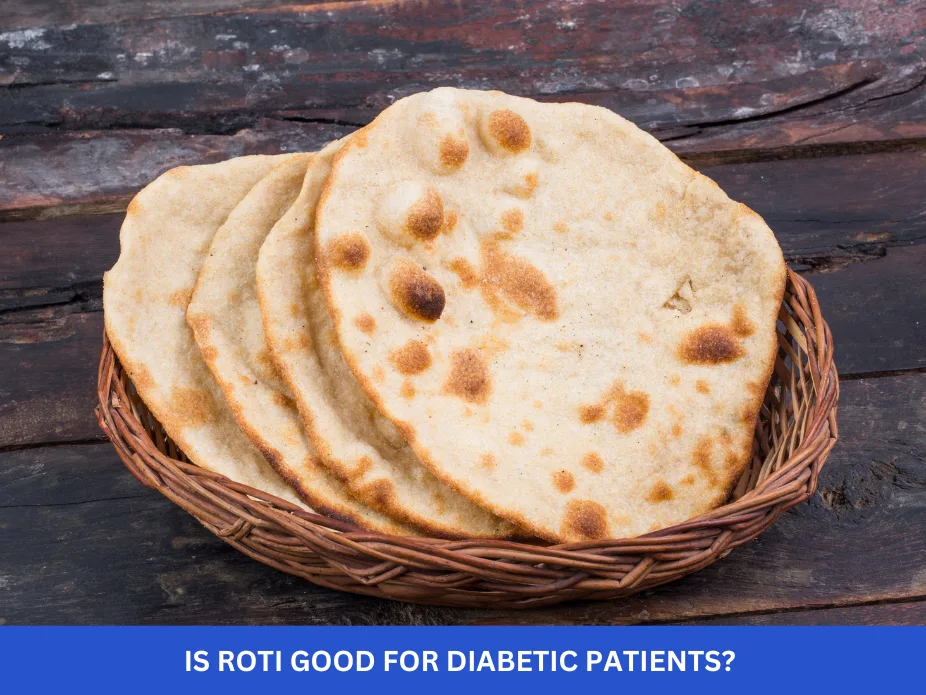Gestational diabetes is a condition that occurs when a woman develops high blood sugar levels during pregnancy. This condition affects a significant number of pregnant women and can pose various risks to both the mother and the baby. One of the major concerns for expectant mothers is whether gestational diabetes can lead to birth defects in their babies. In this comprehensive guide, we’ll explore the types of birth defects that have been linked to gestational diabetes, the factors that influence these risks, and the steps you can take to manage the condition and protect your baby.
What is Gestational Diabetes?
Gestational diabetes (GD) is a condition where a woman who has never had diabetes before develops high blood sugar levels during pregnancy. The condition typically occurs around the 24th to 28th week of pregnancy, although it can develop earlier in some cases. While gestational diabetes often resolves after delivery, it is important to manage it carefully to avoid complications for both the mother and the baby.
Causes of Gestational Diabetes
During pregnancy, the placenta produces hormones that help the baby grow. However, these hormones can also make it harder for the body to use insulin effectively, a condition known as insulin resistance. As a result, the body needs to produce more insulin to keep blood sugar levels in check. In some women, the body is unable to produce enough insulin to compensate for this resistance, leading to high blood sugar levels.
Several factors can increase the risk of developing gestational diabetes, including:
- Being overweight or obese
- A family history of diabetes
- Having a previous pregnancy affected by gestational diabetes
- Being older than 25 years of age
- Having polycystic ovary syndrome (PCOS)
- Giving birth to a baby weighing more than 4 kg (9 pounds) previously
What Birth Defects Are Linked to Gestational Diabetes?
Birth Defects Linked to High Blood Sugar Levels
High blood sugar during pregnancy can affect the development of the baby in the womb. Gestational diabetes can lead to several birth defects and complications for the baby, particularly if blood sugar levels are not well-controlled. Some of the birth defects that have been linked to gestational diabetes include:
1. Congenital Heart Defects
One of the most common birth defects associated with gestational diabetes is congenital heart defects. Babies born to mothers with gestational diabetes may have a higher risk of heart malformations, such as:
- Septal defects: Holes in the walls separating the heart’s chambers.
- Transposition of the great arteries: A condition where the two main arteries of the heart are switched.
- Hypoplastic left heart syndrome: A defect where the left side of the heart is underdeveloped.
These heart defects can range from mild to severe and may require surgery or long-term medical care after birth.
2. Neural Tube Defects
Neural tube defects, including spina bifida and anencephaly, are serious birth defects involving the baby’s brain, spine, or spinal cord. These defects can occur when the neural tube, which eventually forms the baby’s brain and spinal cord, does not close properly during early development. High blood sugar levels in mothers with gestational diabetes can interfere with normal neural tube development, increasing the risk of these defects.
- Spina Bifida: A condition where the spine and spinal cord do not develop properly, leading to nerve damage and sometimes paralysis.
- Anencephaly: A condition where a significant portion of the brain and skull does not develop, which is often fatal shortly after birth.
3. Cleft Lip and Cleft Palate
Cleft lip and cleft palate are common birth defects that occur when the baby’s lip or mouth doesn’t form properly. These defects may vary in severity and can cause difficulties with feeding, speech, and hearing. Babies born to mothers with gestational diabetes have a higher risk of developing these conditions. While genetics play a role in the development of clefts, high blood sugar during pregnancy can increase the likelihood of these defects.
4. Limb Deformities
Gestational diabetes can also increase the risk of limb deformities in babies. This includes conditions like clubfoot (where the baby’s foot is turned inward) or missing or underdeveloped limbs. These limb deformities can vary in severity, and in some cases, may require corrective surgery or therapy.
5. Macrosomia (Large Baby)
While macrosomia is not necessarily a birth defect in itself, it is a condition that often arises from gestational diabetes. Babies born to mothers with gestational diabetes tend to grow larger than average, a condition called macrosomia. This can lead to complications during delivery, such as:
- Difficulty with vaginal delivery
- Increased risk of birth injuries, like shoulder dystocia
- Increased likelihood of a cesarean delivery
A larger baby may also be at risk for low blood sugar (hypoglycemia) after birth, as their insulin production is higher due to the high blood sugar environment in the womb.
6. Respiratory Distress Syndrome (RDS)
Babies born to mothers with gestational diabetes are at a higher risk of respiratory distress syndrome (RDS). This condition occurs when the baby’s lungs are not fully developed, leading to breathing difficulties after birth. RDS is more common in babies born prematurely, but even full-term babies born to mothers with gestational diabetes may face this issue due to the effects of high blood sugar on lung development.
7. Jaundice
Jaundice is a common condition in newborns, where the baby’s skin and eyes appear yellow due to high bilirubin levels in the blood. Babies born to mothers with gestational diabetes are more likely to develop jaundice. This is often a result of the baby’s body breaking down red blood cells more quickly, and in most cases, jaundice resolves on its own within a few days. However, in some cases, treatment may be required.
8. Hypoglycemia (Low Blood Sugar)
Gestational diabetes can cause the baby to produce too much insulin in response to high blood sugar levels in the mother’s bloodstream. After birth, this can result in the baby having low blood sugar, or hypoglycemia. Babies with hypoglycemia may exhibit symptoms such as trembling, lethargy, and poor feeding. In severe cases, they may require intravenous glucose to stabilize their blood sugar levels.
How Does Gestational Diabetes Cause Birth Defects?
High Blood Sugar Affects Baby’s Development
The main way gestational diabetes leads to birth defects is through the elevated blood sugar levels in the mother’s bloodstream. When blood sugar is too high, it crosses the placenta, providing the baby with excess glucose. This excess glucose can interfere with normal fetal development, particularly in critical areas like the brain, heart, and limbs.
Additionally, high blood sugar levels can cause the baby’s pancreas to produce more insulin to deal with the excess glucose. This can lead to overgrowth, or macrosomia, as the baby’s body grows faster than normal.
Impact on Organ Development
High blood sugar can affect organ development, particularly in the early stages of pregnancy when organs are forming. For example, high blood sugar can disrupt the development of the baby’s neural tube, leading to neural tube defects. Similarly, heart defects and limb deformities can occur as a result of disrupted cell development caused by excess glucose.
What Are the Risks for the Mother?
While the focus of gestational diabetes is often on the baby, it’s important to note that the condition also poses risks for the mother. These include:
- High Blood Pressure and Preeclampsia: Gestational diabetes increases the risk of developing high blood pressure and preeclampsia, a serious pregnancy complication that can affect the kidneys and other organs.
- Increased Risk of Type 2 Diabetes: Women who have had gestational diabetes are at a higher risk of developing type 2 diabetes later in life.
- Difficult Deliveries: Due to the increased size of the baby, women with gestational diabetes may face more difficult deliveries, which may include cesarean sections or the risk of shoulder dystocia.
Can Gestational Diabetes Be Prevented?
While it may not be possible to completely prevent gestational diabetes, there are steps that women can take to reduce their risk:
- Maintain a Healthy Weight: Being overweight is a significant risk factor for gestational diabetes. Maintaining a healthy weight before and during pregnancy can help reduce the risk.
- Exercise Regularly: Regular physical activity helps improve insulin sensitivity and can help manage blood sugar levels.
- Eat a Balanced Diet: A diet rich in whole grains, fruits, vegetables, and lean proteins can help maintain healthy blood sugar levels.
- Monitor Blood Sugar Levels: Women at risk for gestational diabetes should monitor their blood sugar levels regularly and work with their doctor to manage them during pregnancy.
How to Manage Gestational Diabetes?
Gestational diabetes can usually be managed with lifestyle changes, including:
- Dietary Adjustments: Eating small, balanced meals throughout the day can help control blood sugar levels.
- Exercise: Regular physical activity can help keep blood sugar levels in check and improve insulin sensitivity.
- Blood Sugar Monitoring: Regular monitoring of blood sugar levels is crucial in managing gestational diabetes. If lifestyle changes are insufficient, medication or insulin therapy may be required.
Real-Life Scenario
Consider a pregnant woman diagnosed with gestational diabetes in her second trimester. Despite following a diet plan, her blood sugar spikes after meals. Her healthcare team monitors her closely, adjusting her meal plan and, if necessary, introducing insulin therapy. With proper management, her baby is born healthy, illustrating how timely intervention can prevent complications.
Expert Contribution
Endocrinologists and obstetricians stress the importance of early detection and monitoring. Dr. Jane Smith, a maternal-fetal medicine specialist, explains: “Controlling blood sugar levels before and during pregnancy dramatically lowers the risk of congenital abnormalities. Collaboration between patients and healthcare providers is key.”
Recommendations Grounded in Proven Research and Facts
- Early Screening – Test for gestational diabetes between 24–28 weeks of pregnancy, or earlier if risk factors exist.
- Blood Sugar Management – Follow a personalized diet, exercise routine, and, if necessary, medication plan.
- Regular Monitoring – Frequent glucose checks and prenatal visits ensure both mother and baby remain healthy.
- Education & Support – Attend gestational diabetes classes and consult certified nutritionists.
- Evidence-Based Practices – Research consistently shows that controlled blood sugar significantly reduces birth defect risks.
FAQs on What Birth Defects Are Linked to Gestational Diabetes?
1. Can gestational diabetes cause birth defects?
Yes, gestational diabetes can increase the risk of certain birth defects, such as congenital heart defects, neural tube defects, and cleft lip/palate. High blood sugar levels can affect the baby’s development in the womb.
2. What are the most common birth defects linked to gestational diabetes?
The most common birth defects linked to gestational diabetes include congenital heart defects, neural tube defects, cleft lip and palate, and limb deformities.
3. Can gestational diabetes affect the baby’s brain?
Yes, high blood sugar levels during pregnancy can interfere with brain development, leading to potential neurodevelopmental issues, including a higher risk of autism and other developmental disorders.
4. How can gestational diabetes be prevented?
While it cannot always be prevented, maintaining a healthy weight, eating a balanced diet, and staying physically active during pregnancy can help reduce the risk of developing gestational diabetes.
5. How is gestational diabetes treated?
Gestational diabetes can be managed with dietary changes, regular exercise, and blood sugar monitoring. In some cases, insulin or medication may be required to control blood sugar levels.
In conclusion, gestational diabetes can increase the risk of several birth defects, including congenital heart defects, neural tube defects, and cleft lip/palate. However, with proper management, including maintaining healthy blood sugar levels during pregnancy, these risks can be minimized. It’s essential for pregnant women to monitor their health closely and follow their doctor’s recommendations to ensure the best possible outcome for both mother and baby.



